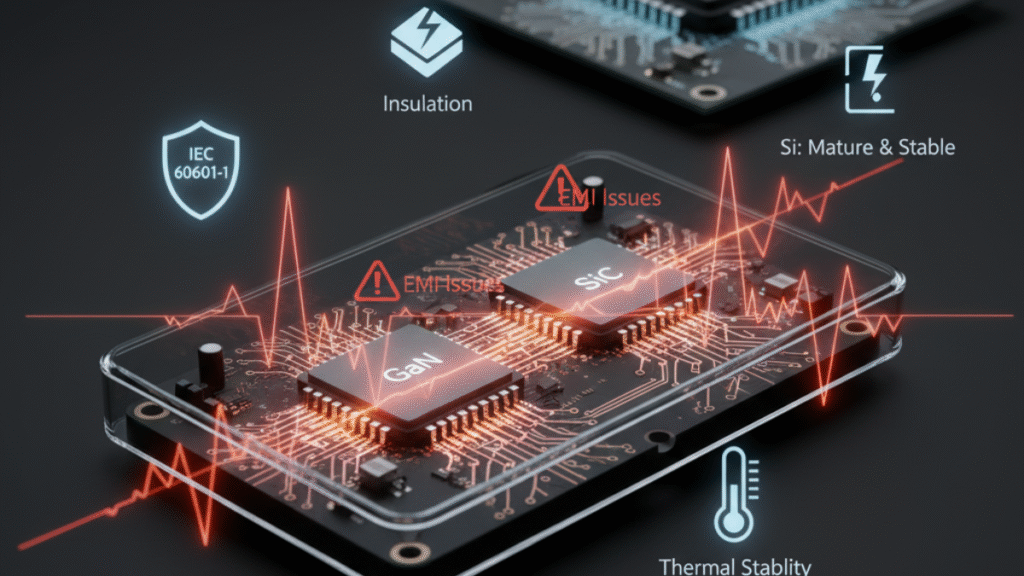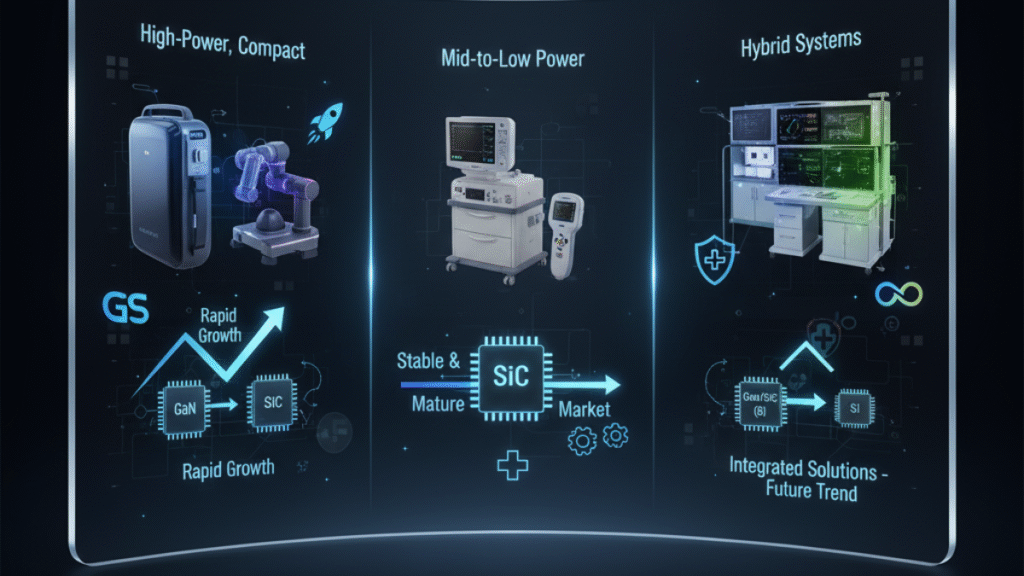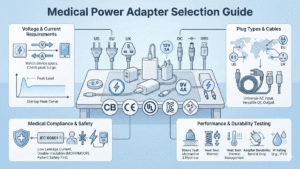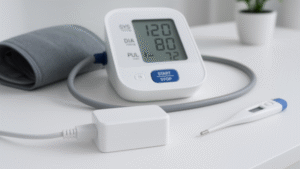We all know that as the technology develops, GaN and SiC , next-generation wide-bandgap semiconductor technologies, are considered key to high-efficiency power supply design.
Can these technologies truly be applied to medical-grade adapters?
Core Technology Overview
A good quality medical power supply needs a lot of requirements to be good, safety, efficiency and reliability. These requirements are perfectly fulfilled with traditional silicon(Si) ,but it has a bandgap around 1.1 eV and thermal conductivity near 150 W/m·K, which limits its switching frequency.
Gallium nitride (GaN) and silicon carbide (SiC) feature much wider bandgaps—about 3.4 eV for GaN and 3.2 eV for SiC—plus stronger breakdown fields and better heat dissipation.
GaN typically reaches roughly 230 W/m·K, while SiC can go up to about 490 W/m·K, allowing them to handle higher switching speeds and power densities more efficiently.
With the technology of GaN and SIC, power adapters will be able to be more efficient ,smaller and have lower heat.

Challenges in Medical Applications
Although there are so many advantages using GaN and SiC in power supplies, people are still not applying them into medical usage on a large scale. And you may ask,”why?” Here is the answer:
GaN and SiC, they have the characteristics of high frequency that could raise the efficiency, but it will also easily introduce the problem of EMI(Electromagnetic Interference).At the same time, medical standards and certifications(IEC 60601-1 compliance) have extremely high requirements for insulation, leakage current, thermal stability and EMI.
What’s more, traditional silicon as an electrode material is already a very mature technology,while GaN and SiC don’t have a totally mature supply chain. In addition,the cost and verification cycle are too long for many factories.

Market & Trend
Always big companies will be leaders. GaN,SiC technology has already been used in chargers for digital products,and the company who produces chargers and medical power supplies will try GaN,SiC technology for medical usage.Needless to say, there are medical PSU makers experimenting with GaN.Quankang has also tried GaN tech in ITE adapters/chargers and it does have good effects.Contact us to get compact medical power solution.
For mid-to-low power medical devices such as inhalers ,pumps or monitors, silicon solutions remain more cost-effective. However, GaN and SiC suit compact systems that demand higher power density. Even in the highly regulated medical sector, hybrid designs combining Si with GaN/SiC are gradually emerging.

Conclusion
GaN power supply and SiC power converter hold strong potential for future medical power supplies, but the challenge of cost and certification is still a problem. So in the short term they will still be experimenting and unable to enter mass production.The transition will likely begin with hybrid topologies in high-efficiency markets.









